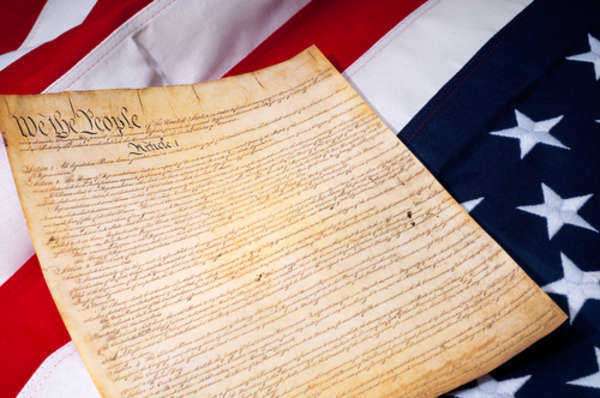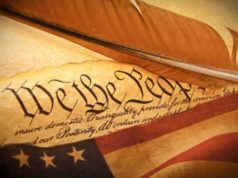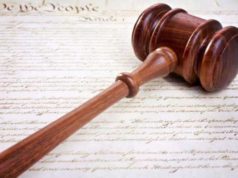
The Preamble of the Constitution: A Pathway to a More Perfect Union
The preamble of the Constitution is perhaps one of the most iconic and important sections of this foundational document. It serves as a clear prologue, outlining the intentions and ambitions of the Constitution’s creation. In a mere 52 words, the Preamble encapsulates the entirety of the Constitution’s purpose, its promises, and its goals. In this article, we will delve deep into the meaning of the Preamble and what it represents for America.
“We the People”
The Preamble begins with what is perhaps its most famous words: “We the People.” These words, which proclaim the Constitution’s authors as representatives of the people, are a reflection of the new country’s ideals of democracy and equality. These four simple words encapsulate the idea that the power of the government comes from the people themselves.
“Form a More Perfect Union”
After establishing the source of power for the Constitution, the Preamble declares that its purpose is to “form a more perfect Union.” This phrase gives America an identity that goes beyond just a group of states. It symbolizes a commitment to unification, improvement, and growth as a nation.
“Establish Justice”
The next phrase in the Preamble is a call for justice. The Constitution’s framers were deeply concerned with the ability to administer the law equally, without bias and without prejudice. The idea that every citizen should be guaranteed equal treatment before the law was a revolutionary one at the time and has continued to shape American ideals in the centuries since.
“Ensure Domestic Tranquility”
Following justice is a promise to “ensure domestic tranquility.” This phrase acknowledges that conflict is a natural part of life, but encourages an approach that is focused on peaceful resolution. This promise embodies America’s commitment to a community that functions on mutual respect, tolerance, and cooperation.
“Provide for the Common Defense”
With these words, the Constitution’s framers expressed their concern for protecting the nation’s safety. This promise reflects the need to have a strong military, as well as the importance of maintaining national security. This phrase remains relevant to this day, reflecting America’s continued involvement in global affairs and its continuing need for a capable military.
“Promote the General Welfare”
A commitment to “promote the general welfare” follows as the next intention of the Constitution. This phrase is both broad and inclusive, encapsulating everything from supporting economic growth and providing social welfare programs to promoting community health initiatives. It reflects America’s commitment to not just its individual citizens but the collective well-being of the nation.
“Secure the Blessings of Liberty”
Finally, the Preamble ends with the promise to “secure the blessings of liberty.” This phrase encapsulates the idea that the document’s true purpose is to protect and guarantee the fundamental rights of individuals. From freedom of expression to the right to vote and worship, the Constitution promises to safeguard these basic human rights.
Conclusion
In conclusion, the Preamble of the Constitution serves as a reminder of the document’s fundamental purpose, making it one of the most important sections of the Constitution. It represents America’s foundational values of democracy, equality, justice, and liberty. It serves as a guide, outlining the ambitions and intentions of those who created our nation’s fundamental laws. By understanding and embracing what these words mean, we can continue to build toward the goal of forming “a more perfect union.”
The Preamble to the United States Constitution was written after the rest of the Constitution had already been completed in a first draft. The United States Constitution was submitted to a Style Committee, which then revised the Constitution and also added the Preamble. This Committee was headed byGovernorMorris of Pennsylvania, and he is often given the credit for having written the Preamble, even though historians cannot be absolutely confident as to whether it was written by him or another man within the Style Committee.
The significance of the Preamble to the rest of the United States Constitution has remained a topic to be debated for many years. The Preamble, though very short, presents a basic set of assumptions and concepts which many interpreted as having legal force. It establishes basic intent for the Constitution, along with a basic understanding of the core ideas in the establishment of the Constitution, such as the fact that the Constitution was being ratified not by individual states, which would have been the only entities governed by the United States Constitution if they had been the ones ratifying it, but was instead being ratified by the people.
The issue of whether or not the Preamble actually bears legal significance, however, was not immediately clear. This is especially so because of the fact that many parties existing at the time of the Constitution’s inception believed that the Preamble provided all the necessary information which the Bill of Rights might have provided, thereby eliminating the need for a separate Bill of Rights.
In general, at this point in American history, the Preamble is considered to have no genuine legal power. It does not grant rights to citizens, nor does it grant powers to the states or to the Federal Government that are not granted elsewhere in the United States Constitution. It does, however, explain some of the motivations and intent of the United States Constitution. It furthermore explains some of the basic tenets under which the United States Constitution operates.
The Preamble provides a strong enough guide that it can influence policy in certain decisions and situations, as it can lead to an understanding of if or when certain principles should apply. A given statute, for example, would exist in law outside of the Preamble to the United States Constitution, but the exact interpretation and implementation of that statute could be influenced by the nature and language of the Preamble.
This means that many elements of the Preamble to the United States Constitution have been dissected and re-examined and dissected again over the years, as many have argued about exactly the way in which the Preamble should be interpreted. For example, understanding exactly what is meant when the phrase “People of the United States” is used is important to understanding the rest of the Constitution and how it should be interpreted.
The understanding of the United States mentioned in the Preamble, for example, has been taken to mean parts of the world that are under the control and domain of the United States, but may not actually be part of the Union. Similarly, understanding the meaning of “We the People” bears great significance. So while the Preamble to the United States Constitution may not have any inherent legal power, it is highly important for understanding the Constitution as a whole and how it comes into play in any given situation.
The Preamble to the United States Constitution was written after the rest of the Constitution had already been completed in a first draft. The United States Constitution was submitted to a Style Committee, which then revised the Constitution and also added the Preamble. This Committee was headed byGovernorMorris of Pennsylvania, and he is often given the credit for having written the Preamble, even though historians cannot be absolutely confident as to whether it was written by him or another man within the Style Committee.
The significance of the Preamble to the rest of the United States Constitution has remained a topic to be debated for many years. The Preamble, though very short, presents a basic set of assumptions and concepts which many interpreted as having legal force. It establishes basic intent for the Constitution, along with a basic understanding of the core ideas in the establishment of the Constitution, such as the fact that the Constitution was being ratified not by individual states, which would have been the only entities governed by the United States Constitution if they had been the ones ratifying it, but was instead being ratified by the people.
The issue of whether or not the Preamble actually bears legal significance, however, was not immediately clear. This is especially so because of the fact that many parties existing at the time of the Constitution’s inception believed that the Preamble provided all the necessary information which the Bill of Rights might have provided, thereby eliminating the need for a separate Bill of Rights.
In general, at this point in American history, the Preamble is considered to have no genuine legal power. It does not grant rights to citizens, nor does it grant powers to the states or to the Federal Government that are not granted elsewhere in the United States Constitution. It does, however, explain some of the motivations and intent of the United States Constitution. It furthermore explains some of the basic tenets under which the United States Constitution operates.
The Preamble provides a strong enough guide that it can influence policy in certain decisions and situations, as it can lead to an understanding of if or when certain principles should apply. A given statute, for example, would exist in law outside of the Preamble to the United States Constitution, but the exact interpretation and implementation of that statute could be influenced by the nature and language of the Preamble.
This means that many elements of the Preamble to the United States Constitution have been dissected and re-examined and dissected again over the years, as many have argued about exactly the way in which the Preamble should be interpreted. For example, understanding exactly what is meant when the phrase “People of the United States” is used is important to understanding the rest of the Constitution and how it should be interpreted.
The understanding of the United States mentioned in the Preamble, for example, has been taken to mean parts of the world that are under the control and domain of the United States, but may not actually be part of the Union. Similarly, understanding the meaning of “We the People” bears great significance. So while the Preamble to the United States Constitution may not have any inherent legal power, it is highly important for understanding the Constitution as a whole and how it comes into play in any given situation.





















